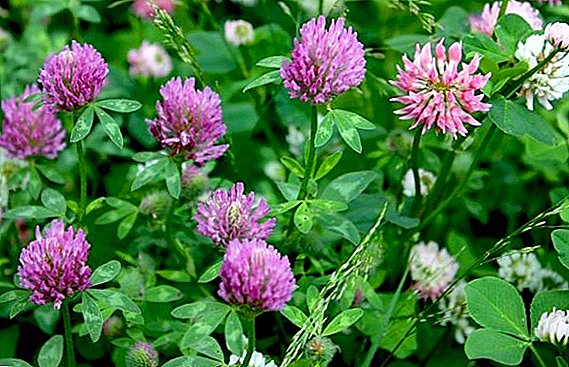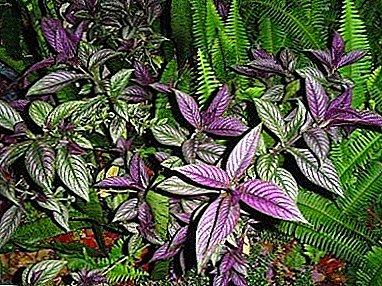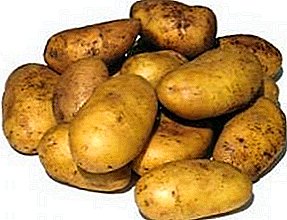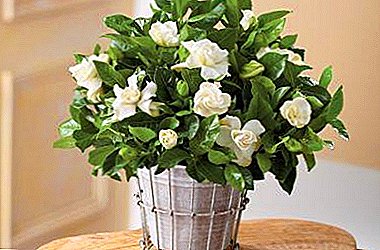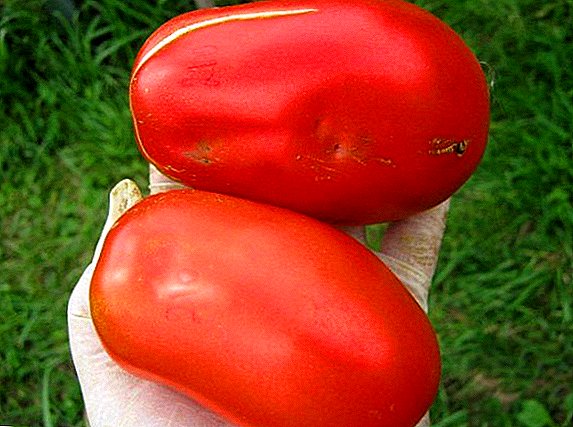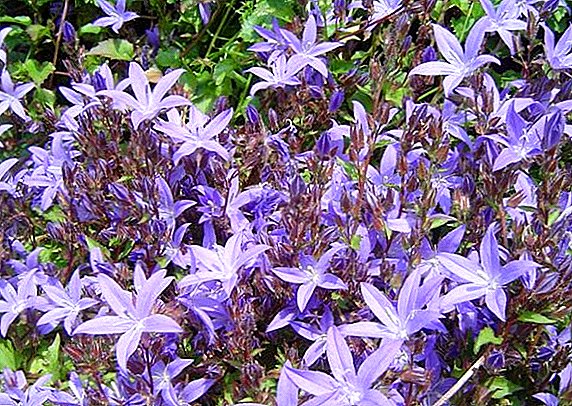 The famous lines of A. Tolstoy "My bells, steppe flowers" have nothing to do with Pozharsky's bells, which are not at all steppe flowers, but on the contrary, mountain flowers. Nevertheless, it is still bells with all the charms inherent in these colors. And the advantages of these plants abound.
The famous lines of A. Tolstoy "My bells, steppe flowers" have nothing to do with Pozharsky's bells, which are not at all steppe flowers, but on the contrary, mountain flowers. Nevertheless, it is still bells with all the charms inherent in these colors. And the advantages of these plants abound.
Botanical description
This perennial herb with pretty flowers is named after the German botanist Gustav Posharsky, whose name was then transformed into a more understandable form for us - Pozharsky. 
The bell of Pozharsky is small in stature, rarely exceeds a height of 20 cm, but on the ground it can travel up to 80 cm in length. These qualities of a plant are due to its stems, which are both creeping and rising. The leaves of the plant are quite large, have a round shape with jagged edges.
To perennial herbaceous plants include such as the starlet lanceolate, tiarella, crested insect, phlox, lychnis, saxifrage, rudbeckia, foxglove.
The flower itself, with an average size of 25 mm, looks like a full-face purple-blue five-pointed star. Depending on the variety, colors can vary from sky blue and lavender pink to dark blue, but the shape of the flower remains almost unchanged.
Did you know? In many countries, people believed that bells help girls find a happy love, and a calm old age is brought to older people.
Distribution and habitat
This flower comes from the Balkans, where it lives in the mountainous regions of Montenegro and Croatia in a natural state, preferring rocks and rocky areas. And although it is endemic, it still managed to naturalize in New Zealand and in some parts of England. 
In garden farms it is common everywhere, being one of the indispensable participants in the creation of landscape gardening, dacha and country manor landscapes.
Popular varieties of bell Pozharsky
The varieties of this plant, derived by the growers, differ from each other mainly in the colors of the petals and the power of flowering.
Learn about the most popular varieties of bluebells, as well as the cultivation of a peach-colored bell, a broad-leaved bell, Carpathian bell.
The following varieties are most popular:
- "Silberregen" - it differs in lengthy from May to September and exceptionally abundant flowering of silver-white star-shaped bells that look on a dark green background of foliage with abundant scattering of shining silver. Most popular with professionals and amateur gardeners around the globe.

- "Blue Gown" - its bushes are not so magnificent, but they cannot but please the eye with their delicate blue bells with a white eye in the middle, blooming from June to September. Looks good as an ampelous plant.

- "Blue Waterfall" - creating a real waterfall of lilac-blue stars, falling from stony hills, artificially and skillfully built in gardens and parks. The bloom is most pronounced in May and June, and re-bloom is possible before September.

- "E. H. Frost" - during flowering, it creates a whole pillow of porcelain-white flowers, as lush as possible in June and early July. Numerous white flowers are decorated with blue asterisks inside. The variety is good in the form of decoration retaining walls, stony soils, as edging flowerbeds.

- "Lisduggan Variety" - different lavender-pink coloring of its stars. This variety is also great for decorating rocky soil, for creating borders, but is especially appreciated as a pot culture.

- "Stella" - Bright blue stars of the plant bloom especially magnificently in July and August. Designed primarily for placement in rockeries.

Did you know? According to a very long-lasting popular belief, bells once a year on the night of Ivan Kupala can gently call back.
Use in landscape design
The mountain origin of Pozharsky's bells predetermined its primary use in landscape design as one of the main decorations of the rockeries.
Long stalks of plants with bright asterisks of different shades over this green carpet, flowing around large boulders, spread along stony soil, look extremely picturesque and create a complete illusion of virgin nature.
In addition, from these flowers create edging flower beds, borders in gardens and parks, they adorn the retaining walls, used as ampelous plants. These flowers look great in pots, barrels, garden vases and other similar containers. 
Growing at home
Bell Pozharsky is considered the most impudent among all other bell species. However, he makes some demands on personal care.
Conditions of detention
Since this plant can be grown both in the open field and in the form of pot culture, the conditions of its content in both cases vary greatly.
When choosing a place for landing in the fresh air, it should be borne in mind that although Pozharsky's bell can grow in partial shade, it is still preferable for him to choose a bright place.
Important! In no case can this plant be planted in places of possible spring flooding of the soil.
Soil and fertilizer
Growing up in the wild on rocks and on stony soils, these flowers and at home do not make great demands on the composition of the soil. For them, it fits almost any if you add fine gravel to it. 
But nevertheless, they grow best on a neutral or slightly alkaline moderately fertile soil, putting forward the only categorical requirement - the absence of stagnant water in the soil.
In spring, the plant can be fed in the form of humus or compost, and before flowering in May or June, add a solution of mineral fertilizers or wood ash, which should be sprinkled on the surface of the soil around the plant.
To mineral fertilizers include such as "Kemira", "Master", "Ammophos", "Sudarushka."
Watering and moisture
The bell does not tolerate spring flooding and close groundwater, and therefore does not require abundant watering. In wet weather it should not be watered at all. During all other periods, the soil should be kept in a moderately humid state. 
Breeding
Those who wish to propagate the bells are given three options for action:
- seed multiplication;
- bush division;
- grafting
Seeds
To obtain seeds for planting, it is necessary to collect seed boxes, which are formed on the site of flowers. These boxes should then be dried and small black seeds should be poured out through the openings in them.
Sow them in the same autumn before the onset of cold weather or in the spring in the warmed land. Seeds are scattered over well-dug earth and lightly powdered with earth or sand. It is best to do this in the fall at the end of October, or in spring - in May.
It is possible to grow seedlings from seeds, which when three leaves appear on it, are planted in open ground after the danger of spring frosts has passed. 
Vegetative
Most often, the bell Pozharsky multiplied in the spring vegetatively with the help of segments with renewal buds and roots. For this, the bush is dug up, the above-ground shoots are removed, the rhizome is divided into parts with renewal buds and fragments of the root system.
These delenki are planted in a shallow groove in such a way that the kidney renewal remained flush with the ground. And for propagation by cuttings, exclusively young shoots are taken and rooted with the help of micro-buds.
Relation to temperature
This bell is exclusively resistant in the face of cold. Even in a snowless winter and without additional warming cover, it can withstand frost down to -40 degrees. A prerequisite for a successful wintering is cutting all shoots to ground level. 
Possible difficulties in growing
This is a highly unpretentious and resilient plant, hardened in the struggle for survival in the mountainous conditions on stony soils and even on the rocks, does not cause flower growers much trouble during its cultivation.
The main thing is that under its roots there is no stagnant water, which the plant does not tolerate in principle. If the groundwater at the site comes close to the surface, then drainage is necessary. Otherwise, the bells in such conditions will not take root.
Important! Another condition for the successful growth of this plant in the dacha is a neutral or slightly alkaline soil reaction. Other soils for the bell are undesirable.
Pests, diseases and prevention
The bell is resistant not only to temperature anomalies, but also to diseases, which, as a rule, bypass it. 
However, sometimes, especially during prolonged rainy weather, the bell can be visited by slugs and drooling pennits, which are usually fought with the help of chilli pepper and garlic infusion.
Again, wet weather can trigger fungi. These can be sclerotinia, Fusarium, Botrytis, which can be cracked through the use of the Fundazol solution.
Sometimes the bell is not averse to eat a mouse. The stalks eaten by her will, of course, grow back, but this may have a detrimental effect on the flowering of the plant in the season.
This lovely plant leaves no one indifferent. A happy combination of original form and exquisite colors makes the bells very popular plants in the country, garden, park and manor landscapes, as well as among potted crops.


